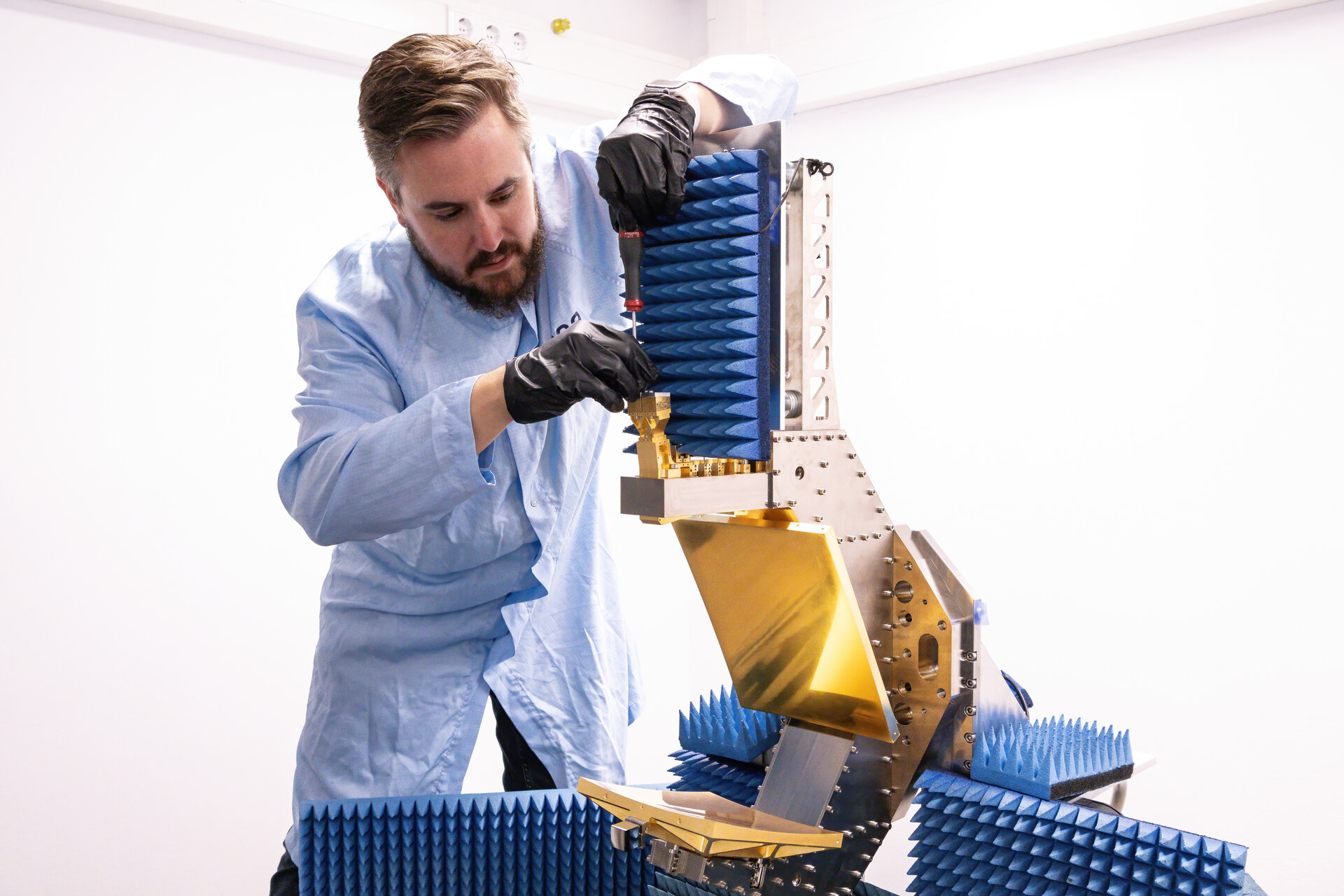This precisely engineered hardware is not itself designed for space, but instead will serve as a common test target for Europe’s leading satellite antenna test facilities.
Formally known as the Sub-Millimetre Wave Validation Standard Antenna, or the VAST for short, its use will ensure that these test chambers all measure the most challenging radio frequencies to be used by future space missions in a correct, consistent way.
“The VAST is a well-characterised, mechanically and thermally stable multi-frequency reflector antenna covering six frequency channels: 89 GHz, 118 GHz, 183 GHz, 325 GHz, 664 GHz and 1.2 THz,” explains ESA antenna engineer Paul Moseley.
“The coming generation of telecommunications, Earth observation and science missions are employing higher and higher radio frequencies, encompassing sub-millimetre waves to allow for faster data rates and more accurate science. But as we go higher into frequency bands, it gets progressively harder and more expensive to properly measure them.
“Accordingly the VAST has been manufactured as a useful way to validate the performance of the various antennas test facilities across Europe. The antenna will regularly commute between them for cross-checking their measurements.”
This is the latest in a series of VAST antennas, the previous versions having served lower frequencies.
As frequencies increase the scale of the antennas becomes proportionately smaller, so that the most accurate of the six feedhorns hosted on this latest VAST structure has needed to be machined to an accuracy of a small fraction of a millimetre.
Its feed horns are made of gold-plated copper and iron-nickel Invar to maximise thermal stability, minimising any temperature-driven deformation. For further stability, the VAST will be cryo-actively cooled during testing.
Paul adds: “As it journeys between sites, the VAST carries a battery-powered accelerometer, so we will be able to identify any jolts or other forces that might misalign it. Our aim is that the VAST goes on serving as a common reference point for European test facilities for many years to come.”
The VAST was produced for ESA by a consortium led by EOSOL in Spain, with Radiometer Physics GmbH and Space Structures Gmbh in Germany and Universidad Politécnica de Madrid in Spain. Its development was backed through ESA’s Technology Development Element with the support of the Agency’s Earth Observation Directorate.


